Sensor: Gyroscope

A triple-axis gyroscope integrated at the front of the board senses balance and rotation in all 3 dimensions.
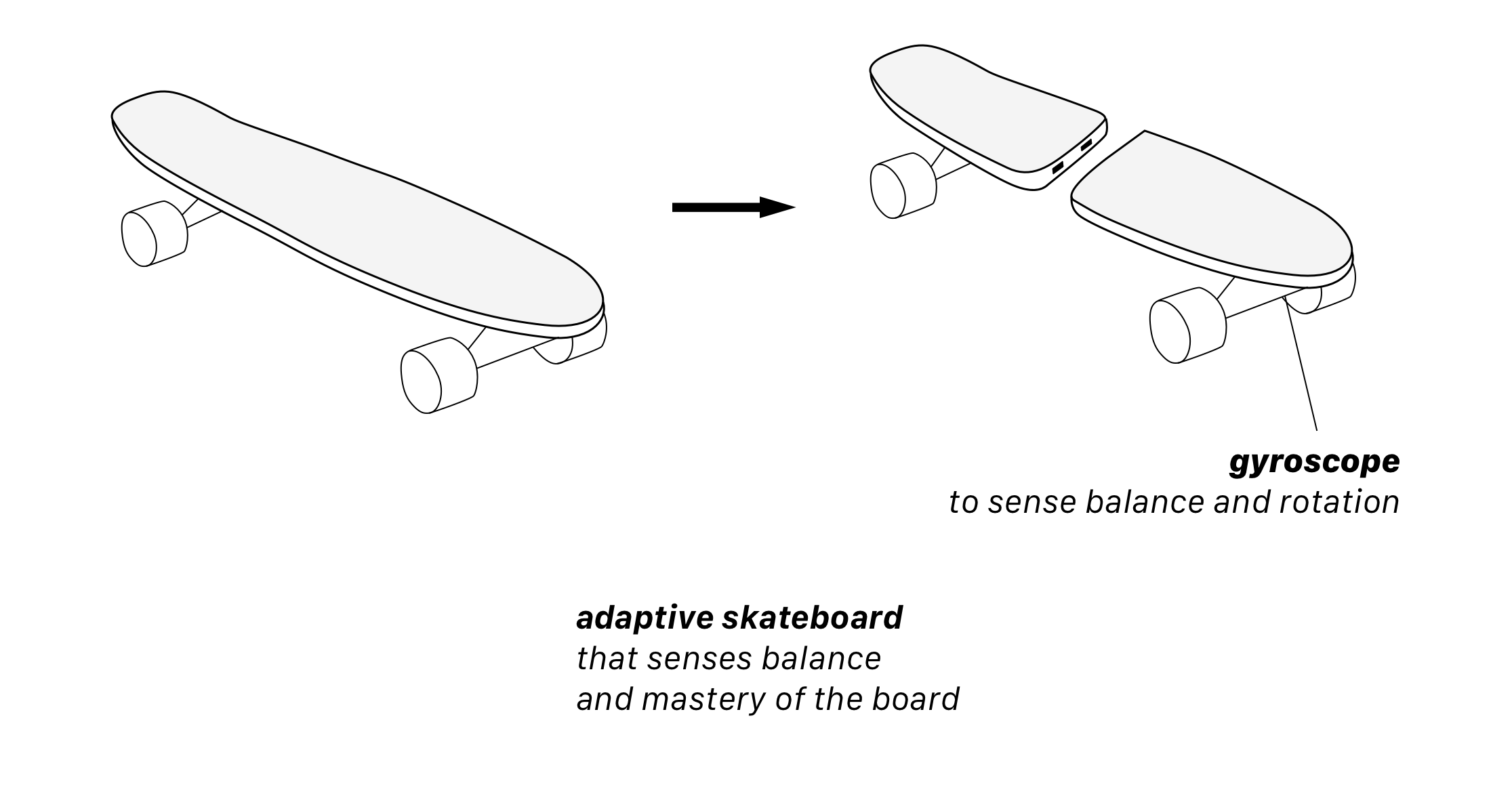
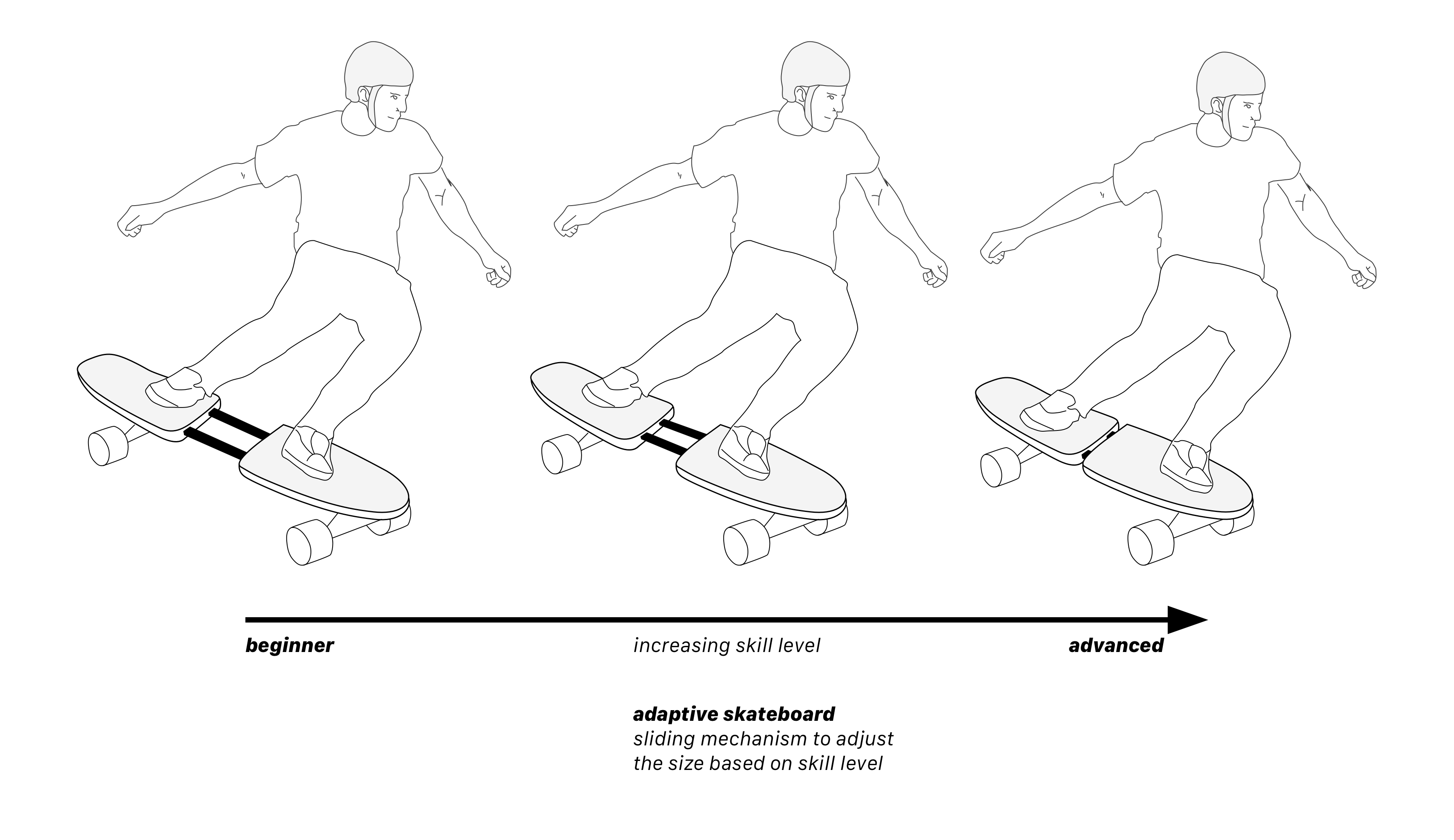

Adaptive Mode
Let sk8mate adapt to your skill level. With a click of a button, skate around and sk8mate will detect and adjust to your skill level. As you practice and improve, sk8mate will automatically adapt and adjust as well.
A triple-axis gyroscope integrated at the front of the board senses balance and rotation in all 3 dimensions.
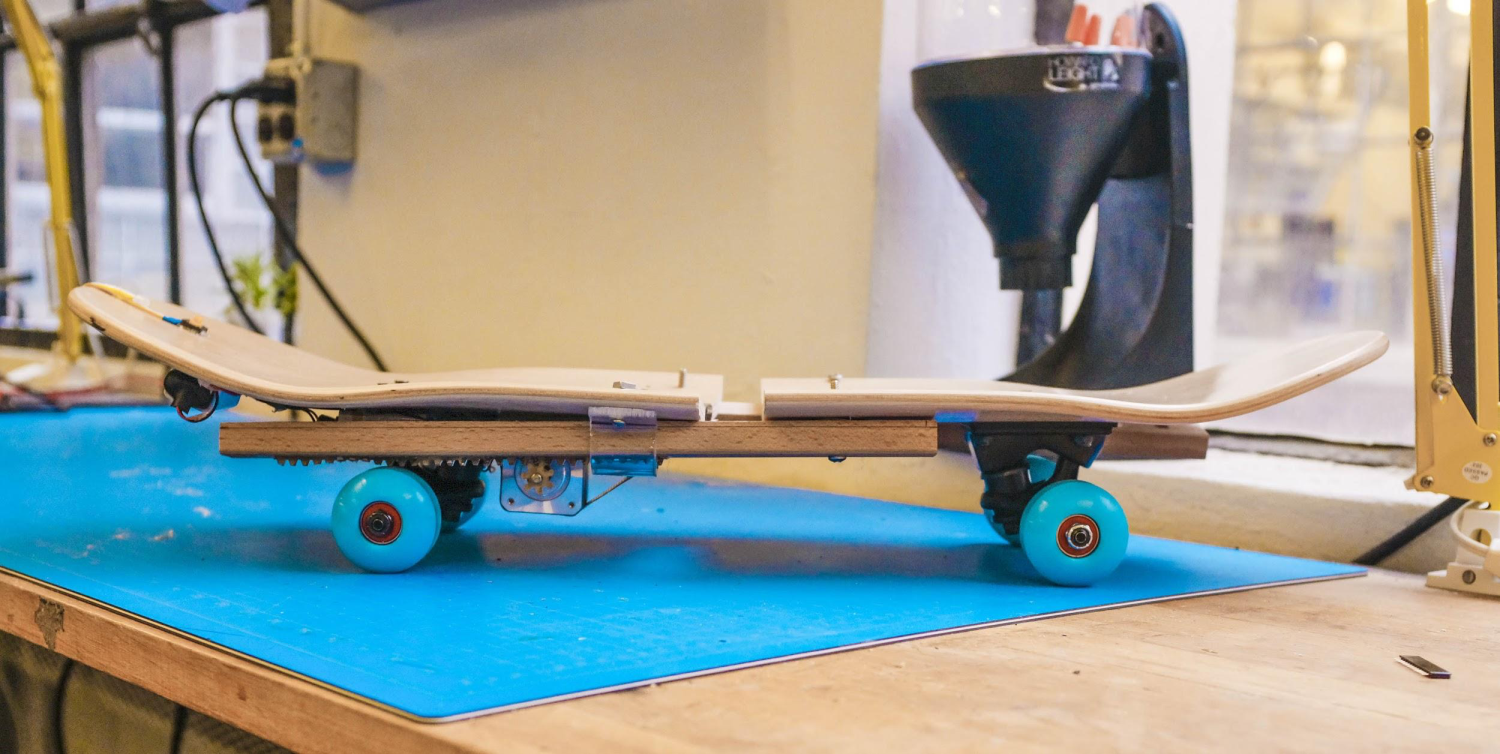
Our custom-engineered sliding mechanism allows the board to transform in length.

The stepper motor actuates the length of the board automatically on a rack and pinion setup, with a click of the button.

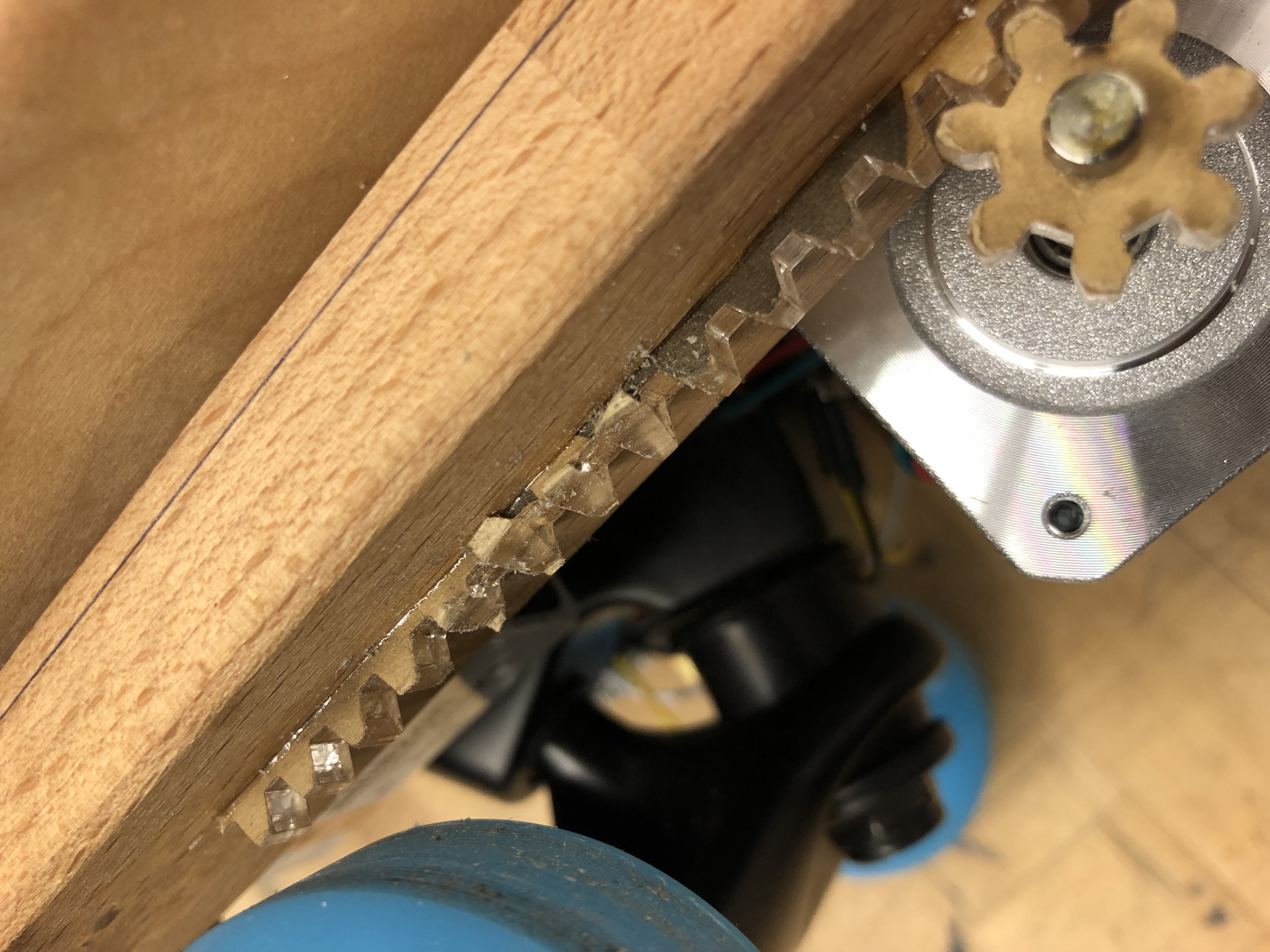
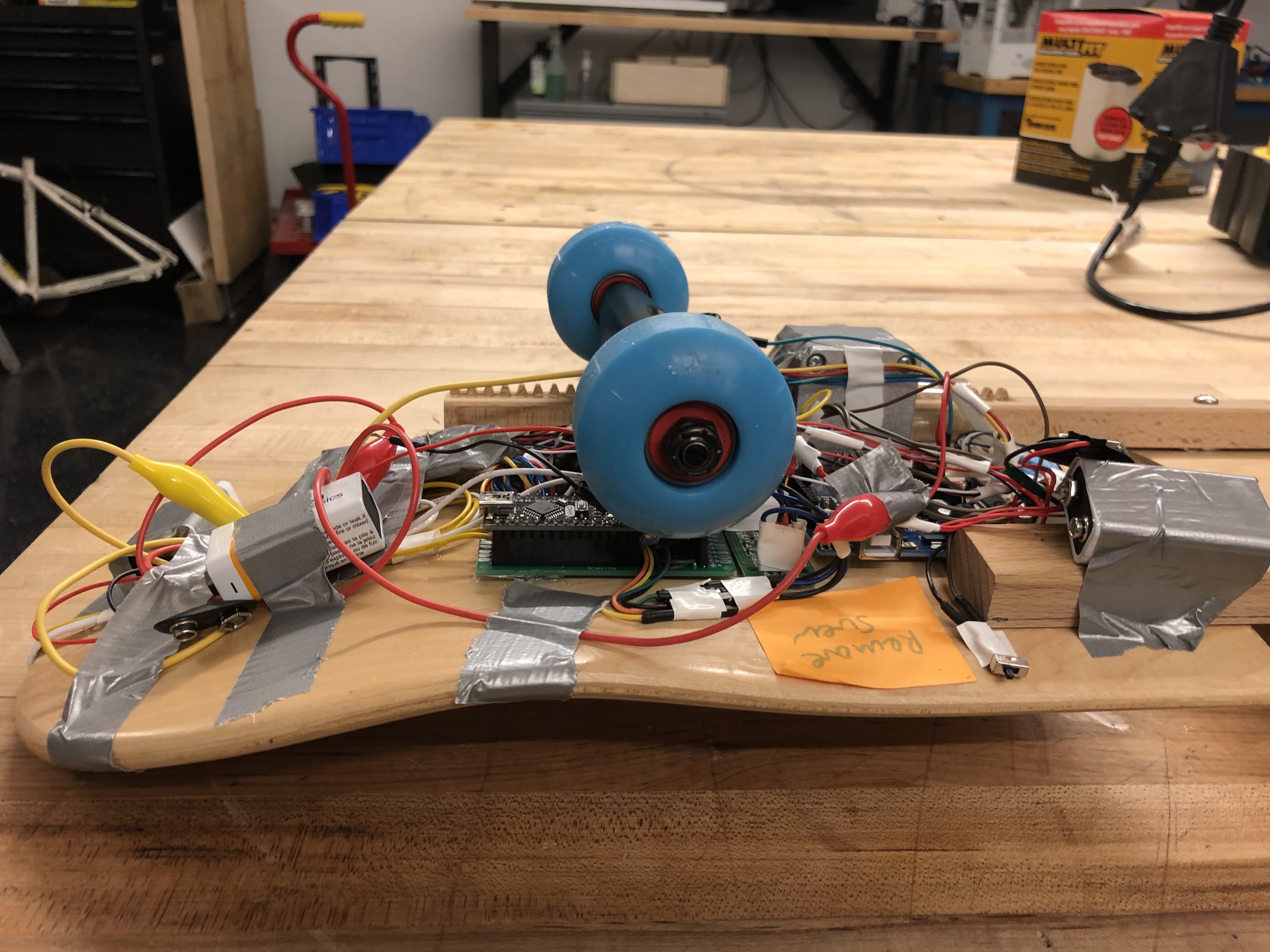
| Challenge | Solution |
|---|---|
| Build a motorized mechanism for extending/retracting the board | We cut two pieces of wood and bended acryllic to attach sliding rods to connect two sides of a skateboard. To actuate, we devised a rack and pinion mechanism through many iterations of trial and error. Additionally, we designed a housing to cover the gap between the two halves of the board. |
| Create skill level settings, and switching between them | We decided to stick with 3 levels (beginner, medium, and advanced). Because the stepper motor doesn't keep track of position, we store the current state of the board and program differences in length, backward and forward, to get from any of the three levels to another. It took trial and error to get the right lengths. We then drilled holes and use a pin to lock the length in place. |
| Develop an algorithm to measuring how well the user is balancing | We parse through sensor readings from the gyroscope and wrote an algorithm to detect sudden changes in balance, rotation, and wobbling. One big wobble only shows gradual change in orientation in each time step. Thus, we had to balance between recording enough data, storing a buffer, and measuring large changes in a given orientation over time. |
| Power the electronics and motor | We use 3 different 9V batteries and wired in switches to turn them on and off easily. |
| With repeated user testing, the glue attaching our motor to the board broke off | We tried several types of glue (i.e. epoxy, adhesive, and wood glues), but in the end the only adhesives strong enough were hot glue and gorilla duct tape. |


